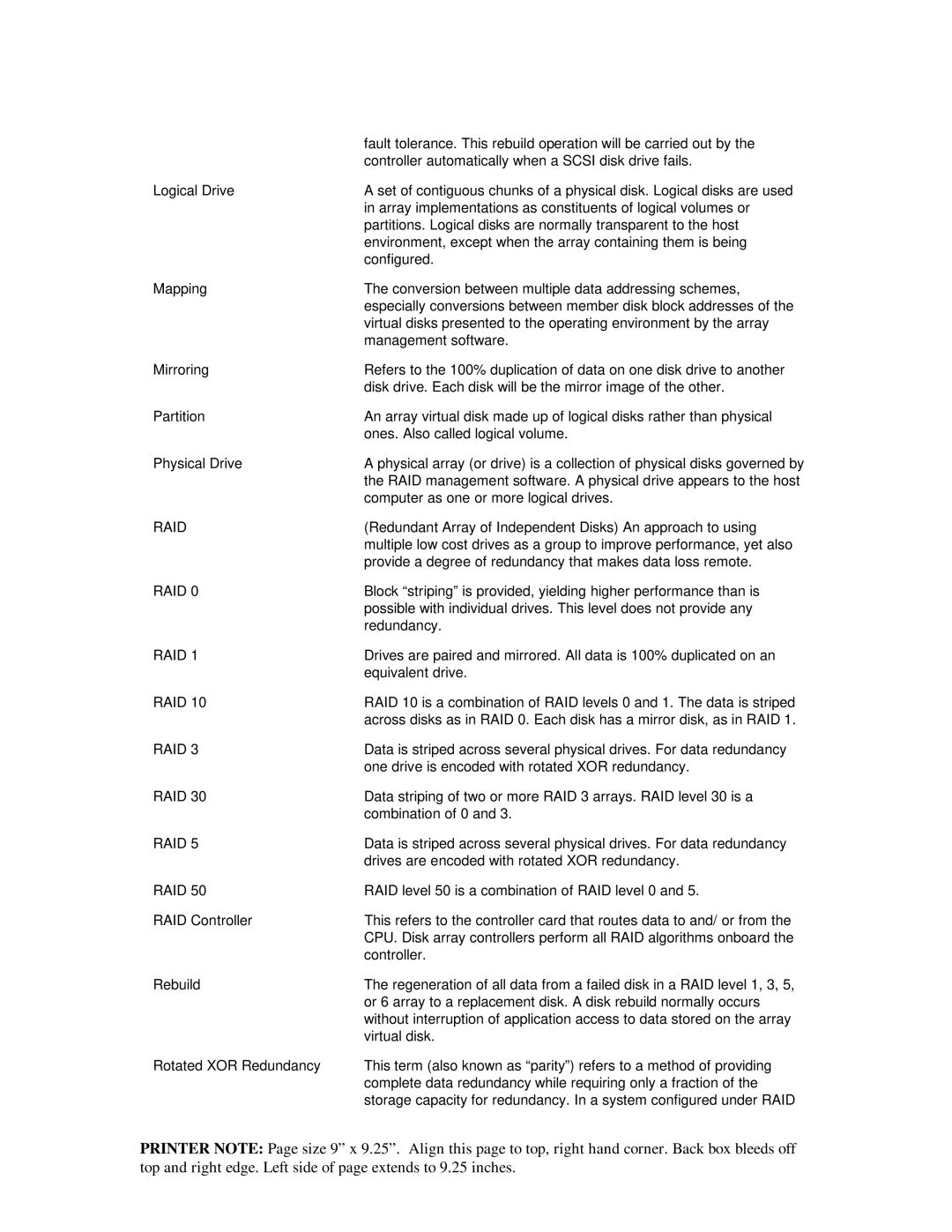| fault tolerance. This rebuild operation will be carried out by the |
| controller automatically when a SCSI disk drive fails. |
Logical Drive | A set of contiguous chunks of a physical disk. Logical disks are used |
| in array implementations as constituents of logical volumes or |
| partitions. Logical disks are normally transparent to the host |
| environment, except when the array containing them is being |
| configured. |
Mapping | The conversion between multiple data addressing schemes, |
| especially conversions between member disk block addresses of the |
| virtual disks presented to the operating environment by the array |
| management software. |
Mirroring | Refers to the 100% duplication of data on one disk drive to another |
| disk drive. Each disk will be the mirror image of the other. |
Partition | An array virtual disk made up of logical disks rather than physical |
| ones. Also called logical volume. |
Physical Drive | A physical array (or drive) is a collection of physical disks governed by |
| the RAID management software. A physical drive appears to the host |
| computer as one or more logical drives. |
RAID | (Redundant Array of Independent Disks) An approach to using |
| multiple low cost drives as a group to improve performance, yet also |
| provide a degree of redundancy that makes data loss remote. |
RAID 0 | Block “striping” is provided, yielding higher performance than is |
| possible with individual drives. This level does not provide any |
| redundancy. |
RAID 1 | Drives are paired and mirrored. All data is 100% duplicated on an |
| equivalent drive. |
RAID 10 | RAID 10 is a combination of RAID levels 0 and 1. The data is striped |
| across disks as in RAID 0. Each disk has a mirror disk, as in RAID 1. |
RAID 3 | Data is striped across several physical drives. For data redundancy |
| one drive is encoded with rotated XOR redundancy. |
RAID 30 | Data striping of two or more RAID 3 arrays. RAID level 30 is a |
| combination of 0 and 3. |
RAID 5 | Data is striped across several physical drives. For data redundancy |
| drives are encoded with rotated XOR redundancy. |
RAID 50 | RAID level 50 is a combination of RAID level 0 and 5. |
RAID Controller | This refers to the controller card that routes data to and/ or from the |
| CPU. Disk array controllers perform all RAID algorithms onboard the |
| controller. |
Rebuild | The regeneration of all data from a failed disk in a RAID level 1, 3, 5, |
| or 6 array to a replacement disk. A disk rebuild normally occurs |
| without interruption of application access to data stored on the array |
| virtual disk. |
Rotated XOR Redundancy | This term (also known as “parity”) refers to a method of providing |
| complete data redundancy while requiring only a fraction of the |
| storage capacity for redundancy. In a system configured under RAID |
PRINTER NOTE: Page size 9” x 9.25”. Align this page to top, right hand corner. Back box bleeds off top and right edge. Left side of page extends to 9.25 inches.
